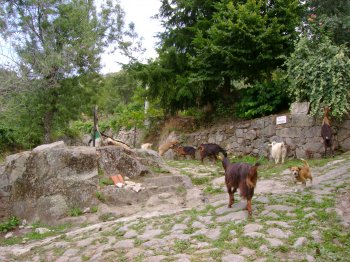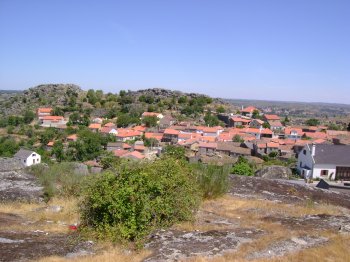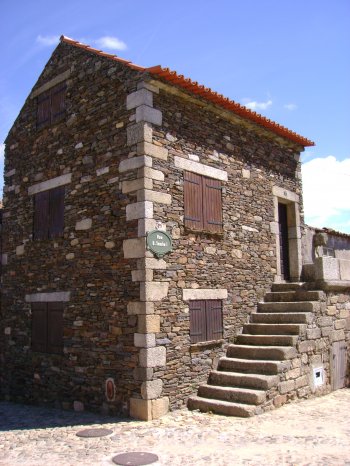Explore the best places
Villages in Sabugal
Quarta-Feira
- country
- heritage
Quarta-Feira
6320, Sabugal
Located on a foothill, this is one of the old villages in the parish with strong rural and cultural traditions. The majority of the inhabitants are farmers. A special note to the local craftswork, such as the Arroiolos tapestries, the linens, the flutes and the stone sculptures.

Sortelha
- country
- heritage
Sortelha
6320, Sabugal
Sortelha is one of the oldest small towns in the entire country. Located on the top of a rocky hill at an altitude of more than 760 metres. With excellent defensive conditions, it was inhabited, at first, by castros (celtic villages) and, much later, it was peopled by the king Dom Sancho II. Of the medieval castle, that was several times transformed, some defensive towers, the donjon and some gothic gates along the walls still remain. A special note to the 14th century mother church, with baroque carvings on the high altar from the 18th century.

Vilar Maior
- country
- heritage
Vilar Maior
6320, Sabugal
The castle of the old town is located at its highest point and stands out in all the surrounding areas. An old 16th century engraving, of Duarte D'Armas, shows the thre areas of the time. A special not to the pillory, the houses with coats of arms, the old bridge and the gallows.

Vila do Touro
- country
- heritage
Vila do Touro
6320, Sabugal
Donated to the Templars by Dom Afonso II, this village still has some important military features. There are just a few vestiges of the old castle. Currently, the village is divided in three areas: castle, calvary and the collective fields, still widely occupied. A special note to the walls of the old castle and of the citadel, the mother church, the 16th century mother church, with a Renaissance pulpit, the Hermitage of Saint Lázaro, the manuelin window and the 16th century granite pillory.

Sabugal
- country
- heritage
Sabugal
6320, Sabugal
Located on the right bank of the Côa river, to the north of the Malcata mountain, it became a part of the Portuguese territory in 1296 as a result of the Treaty of Alcanices. The area insid the walls still has some of the original features and is a valuable cultural heritage. Among the several monuments, the castle and the walls, the mother church, the romanesque-gothic church of misericórdia and the medieval bridge on the Côa river stand out.

Alfaiates
- country
- heritage
Alfaiates
6320, Sabugal
Located on a foothill, it was important for the country's defenses during the independence struggles. It became a part of Portugal during the reign of Dom Dinis. Inside the walls, it still has its architectural geommetrical patterns, a bit unique in the Middle Ages. A special note to the ruined castle, classed as a National Monument, the church and the pillory. The local craftswork includes the manufacturing of chairs.
